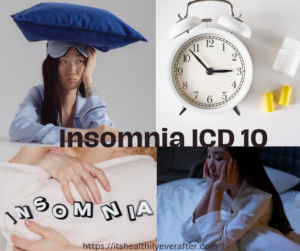Mindfulness and meditation are powerful tools to help improve your mental health and well-being. Taking the time to practice mindfulness and meditation can help you gain clarity, reduce stress, and improve your overall mental health. In this blog post, we will explore the surprising power of these practices for mental health and why it is important to incorporate these practices into your daily life.
Table of Contents
What is Mindfulness and Meditation
Mindfulness is the practice of being present and fully engaged in the current moment, without judgment. It is a state of awareness that allows us to observe our thoughts, emotions, and surroundings without getting caught up in them. Meditation, on the other hand, is a technique that helps to cultivate mindfulness by quieting the mind and focusing on a particular object or thought.
Mindfulness involves paying attention to the present moment in a non-judgmental way. This means being aware of your thoughts, emotions, physical sensations, and surroundings without getting caught up in them or evaluating them as good or bad. It can be practiced informally throughout the day by bringing attention to everyday activities, such as eating or walking, or through formal meditation practices.
Meditation is a set of techniques that are designed to help individuals develop mindfulness, concentration, and relaxation. There are many different types of meditation, but most involve sitting in a quiet place with eyes closed and focusing on a specific object, such as the breath, a mantra, or a visual image. Meditation can be practiced alone or with a group, and it can be done for short or long periods of time.
Both mindfulness and meditation have been shown to have numerous benefits for physical and mental health, including reducing stress, anxiety, and depression, improving sleep, enhancing immune function, and increasing feelings of well-being and happiness.

How can Mindfulness and Meditation help with Mental Health?
These have become increasingly popular practices as more people are recognizing the potential benefits they have on mental health. While mindfulness and meditation can be used to simply relax and unwind, they also offer much more. Research has shown that mindfulness and meditation can help improve symptoms of depression and anxiety, reduce stress levels, and even improve physical health.
Mindfulness and meditation help individuals become aware of their thoughts, feelings, and emotions. This increased awareness can help individuals gain insight into their behaviour and work towards making necessary changes. By learning to recognize when thoughts are negative or unrealistic, individuals can challenge these thoughts and look for more positive solutions. This process can also help reduce stress levels and improve overall mood.
Mindfulness and meditation can also help individuals develop better coping skills when faced with difficult situations. By learning to stay in the present moment rather than ruminating over the past or worrying about the future, individuals can create a sense of peace and inner calm. This can help individuals respond to challenging situations in a healthier and more adaptive manner.
In addition to their psychological benefits, these can also have physical health benefits as well. Research has shown that mindfulness and meditation can help improve sleep quality, increase energy levels, reduce blood pressure, and even boost the immune system.
Overall, mindfulness and meditation can be incredibly helpful in managing mental health issues and improving overall well-being. Not only can these practices help individuals gain insight into their thoughts, feelings, and behaviours, but they can also reduce stress levels, improve physical health, and help individuals develop healthier coping skills.

What are some tips for getting started with Mindfulness and Meditation?
Mindfulness and meditation can be great tools for improving your mental health, but getting started can seem intimidating or overwhelming. However, there are several easy ways to incorporate mindfulness and meditation into your daily life.
The first step is to set aside some time each day. It doesn’t have to be long—even five or ten minutes of mindful practice is beneficial. It’s also important to choose a quiet place where you won’t be disturbed or distracted. You may want to light a candle, play some soothing music, or do something else to create a peaceful atmosphere.
When you’re ready to begin, take some deep breaths and focus on the present moment. Notice the sensations in your body, any sounds or smells in the environment, and the thoughts passing through your mind. If any negative thoughts arise, observe them without judgement and let them pass. You can also practice guided mindfulness exercises, such as body scans or visualizations.
It’s also helpful to focus on one thing at a time. For example, if you’re eating, don’t multitask by scrolling through social media or watching TV. Instead, pay attention to the food in front of you and savour every bite. Or if you’re taking a walk, focus on the sensation of your feet hitting the ground and the smell of the air.
Meditation is another great way to practice mindfulness. You can meditate by sitting in a comfortable position with your eyes closed, focusing on your breath and letting go of thoughts as they arise. Or you can use guided meditations such as yoga nidra or loving-kindness meditations.
It’s also important to be patient and compassionate with yourself when starting a mindfulness practice. Mindfulness and meditation are not meant to be perfect; instead, it’s about noticing your experience in the present moment without judgment or expectation. And remember that it takes time and practice for these techniques to become a part of your daily life.


Ways to Practice Mindfulness and Meditation
Mindfulness and meditation are practices that can have numerous benefits for both your physical and mental well-being. Here are some steps to get started:
- Find a quiet and comfortable place where you can sit undisturbed for a few minutes.
- Sit in a comfortable position with your back straight and your eyes closed or with a soft gaze.
- Focus on your breath as it enters and leaves your body. You can focus on the sensation of the breath as it moves in and out of your nostrils, or you can focus on the rising and falling of your belly or chest.
- If your mind starts to wander, gently bring your attention back to your breath without judging yourself or your thoughts.
- Try to be present and aware of your surroundings, but without getting caught up in them. Acknowledge any thoughts, feelings or sensations that arise during your practice, but don’t judge or dwell on them.
- Start with short sessions of 5-10 minutes and gradually increase the length of your practice as you become more comfortable.
- Try to practice regularly, ideally every day. You can set aside a specific time each day for your practice, or you can incorporate mindfulness into your daily activities.
There are many different types of meditation, so you can also explore different techniques and find the one that works best for you. Some common types include:
Mindfulness meditation: as described above, focusing on your breath and being present in the moment. It is a practice that involves bringing attention to the breath, bodily sensations, thoughts, and emotions in a gentle and accepting manner, without getting caught up in them or trying to change them.The goal of mindful meditation is to develop a state of mindfulness, which is the ability to be fully present and engaged in the current moment.
By practicing mindfulness, individuals can learn to observe their thoughts and feelings without getting overwhelmed by them, and they can develop a greater sense of clarity, calmness, and well-being. Mindful meditation can be practiced in various ways, such as through sitting meditation, walking meditation, or even while engaging in daily activities such as eating or showering. It is a simple practice that can be done anywhere and anytime, and it has been shown to have many benefits, including reducing stress, anxiety, and depression, improving focus and attention, and enhancing overall mental and physical health.
Loving-kindness meditation: focusing on sending love and kindness to yourself and others.Loving kindness meditation, also known as metta meditation, is a mindfulness practice that involves cultivating feelings of love, kindness, and compassion towards oneself and others. It is rooted in Buddhist traditions and has been widely practiced in many cultures.
In this practice, the meditator typically sits in a comfortable position and begins by focusing on their breath, allowing themselves to become relaxed and present. They then repeat a series of phrases or mantras silently to themselves, such as “may I be happy, may I be healthy, may I be safe, may I be at peace.”
As the meditation progresses, the meditator expands their focus to include loved ones, acquaintances, strangers, and even difficult people. They continue to silently repeat phrases, wishing well-being and happiness to all beings.
The purpose of loving kindness meditation is to develop a deep sense of compassion, empathy, and connection with others. It can help reduce feelings of stress, anxiety, and loneliness and promote positive emotions such as joy, gratitude, and kindness. With regular practice, it can lead to a greater sense of overall well-being and positivity in one’s life.
Body scan meditation: focusing on different parts of your body, relaxing them and becoming more aware of physical sensations.
Body scan meditation is a mindfulness practice that involves systematically bringing attention to different parts of the body, in order to develop awareness and acceptance of physical sensations, emotions and thoughts.
During a typical body scan meditation, the individual will usually lie down or sit comfortably in a quiet place, and then close their eyes or soften their gaze. The practice usually begins by taking a few deep breaths to calm the mind and relax the body.
The individual then starts by focusing their attention on their toes and slowly moves their awareness up through the feet, ankles, lower legs, knees, thighs, hips, abdomen, chest, upper back, shoulders, arms, hands, neck, and head. At each body part, the person pauses and observes any sensations, without trying to change them, judge them or react to them. If the mind wanders, the person gently brings their attention back to the present moment and to the next part of the body.
By systematically exploring each part of the body, body scan meditation helps the individual to develop greater body awareness, relax tense muscles, reduce stress and anxiety, and cultivate a deeper sense of calm and inner peace.
Body scan meditation can be practiced for as little as 5 minutes or as long as 45 minutes, depending on the individual’s preference and schedule. It can be especially helpful for people who struggle with chronic pain, anxiety, or sleep problems, as well as those who simply want to develop greater self-awareness and mindfulness in their daily lives.
Remember, mindfulness and meditation are practices, so don’t worry if you find your mind wandering or if you struggle to sit still at first. With consistent practice, you will gradually find it easier to stay present and focused.


Frequently Asked Questions (FAQs)
1. What is the difference between mindfulness and meditation, and how do they contribute to mental health? Mindfulness is a mental state achieved through focused awareness on the present moment, while meditation is a broader practice that encompasses various techniques to achieve mental clarity and relaxation. Both contribute to mental health by reducing stress, enhancing self-awareness, and fostering a positive mindset.
2. Can mindfulness and meditation help with stress management and anxiety? Yes, both mindfulness and meditation have been shown to be effective in stress reduction and anxiety management. These practices encourage individuals to cultivate a non-judgmental awareness of their thoughts and emotions, providing tools to respond to stressors in a more composed and balanced manner.
3. How long does it take to experience the mental health benefits of mindfulness and meditation? The timeline for experiencing mental health benefits can vary among individuals. Some may notice improvements after a few sessions, while others may require more consistent practice over an extended period. Consistency and commitment to the practice are key factors in realizing the full benefits.
4. Can mindfulness and meditation be incorporated into a busy lifestyle, and how much time is needed daily for noticeable effects? Yes, mindfulness and meditation can be adapted to fit busy schedules. Even brief sessions, such as 10 to 15 minutes a day, can yield noticeable effects over time. It’s more about consistency and regular practice than the duration of each session.
5. Are there specific mindfulness and meditation techniques recommended for certain mental health conditions, such as depression or insomnia? Yes, various mindfulness and meditation techniques can be tailored to address specific mental health conditions. Mindfulness-based stress reduction (MBSR), loving-kindness meditation, and guided imagery are among the techniques that have shown promise for conditions like depression and insomnia. It’s advisable to explore and consult with a mental health professional for personalized recommendations.
6. Can mindfulness and meditation be practiced independently, or is guidance from a teacher or app recommended? Both independent practice and guided sessions can be effective. Beginners may find guided sessions helpful, either through a teacher or meditation apps, to provide structure and support. As individuals become more experienced, they may choose to practice independently. The key is finding an approach that aligns with personal preferences and goals.
7. Are there any potential challenges or misconceptions about mindfulness and meditation for mental health? Common challenges may include difficulty maintaining focus, impatience, or unrealistic expectations. It’s important to approach mindfulness and meditation with an open mind, acknowledging that the practice is a skill that develops over time. Addressing misconceptions, such as the need for complete mental silence, can contribute to a more positive and sustainable practice.
8. Can mindfulness and meditation be integrated into existing mental health treatments? Yes, mindfulness and meditation can complement existing mental health treatments. Many therapeutic approaches incorporate mindfulness-based interventions to enhance overall well-being. However, it’s crucial to consult with mental health professionals to ensure a cohesive and collaborative approach to treatment.
9. Is mindfulness suitable for everyone, or are there specific considerations for certain individuals? Mindfulness is generally suitable for most individuals, but it’s essential to consider personal preferences, comfort levels, and individual mental health conditions. Those with specific concerns or conditions should consult with a healthcare professional before beginning a mindfulness or meditation practice.
10. Can children and adolescents benefit from mindfulness and meditation practices for mental health? Yes, mindfulness and meditation practices can be adapted for children and adolescents and have shown positive effects on their mental well-being. Simple and age-appropriate techniques can help young individuals develop emotional regulation, focus, and resilience. Parents and educators can play a crucial role in introducing these practices in a supportive and engaging manner.
Conclusion
Mindfulness and meditation are powerful tools that can help individuals manage stress, improve focus, and enhance overall well-being. With regular practice, anyone can incorporate these practices into their daily routine and reap the benefits for their mental health. So, take a few moments out of your day, sit down, and focus on your breath – it might just change your life.





Pingback: The Dark Side of Menacing Stress: How It Can Negatively Affect Your Mental Health - HEALTHILY EVER AFTER
Pingback: 10 Ways to Combat Deadly Depression with Natural Antidepressants - HEALTHILY EVER AFTER